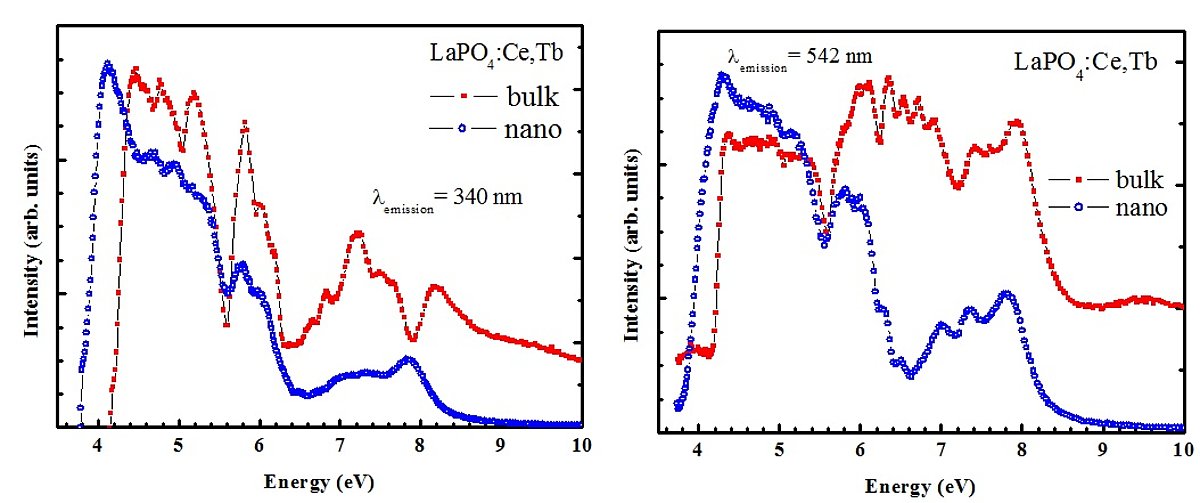
The most ambitious and fascinating application of luminescent nanomaterials is probably related to medicine and molecular biology. Here, luminescent nanomaterials are promising tags for optical imaging and fluorescent labelling to allow for novel techniques of non-invasive diagnosis and in vivo observation of complex vital functions. The current work is a summary of the systematic spectroscopic studies of actual nanosized luminescent complex oxides (LaPO4:Ce,Tb; YVO4:Eu; Y3Al5O12:Ce (YAG:Ce); ZnWO4; NiWO4) with an attempt to analyse the electronic relaxation processes performed using energy and time-resolved luminescence spectroscopy. The experiments have been carried out utilising European synchrotron centres: i) The Superlumi endstation of I3 line of DORIS III storage ring at DESY (Hamburg, Germany); ii) The luminescence endstation of the FinEst undulator beamline of MAX III storage ring at MAX IV (Lund, Sweden). The examinations focused on the energy transfer processes within the rare-earth ions leading to the optical transitions. The influence of the different parameters such as temperature, doping concentration, and initial excited state were treated to provide complementary information concerning the electronic structure as well as electronic excitations in nanophosphors. A significant difference in luminescence properties between the nano and macroscopical analogues was found in the current work. The results achieved show that small nanoparticle size and loss centres related to the surface of a nanoparticle are responsible for changes in the luminescence properties of nanosized complex oxides.